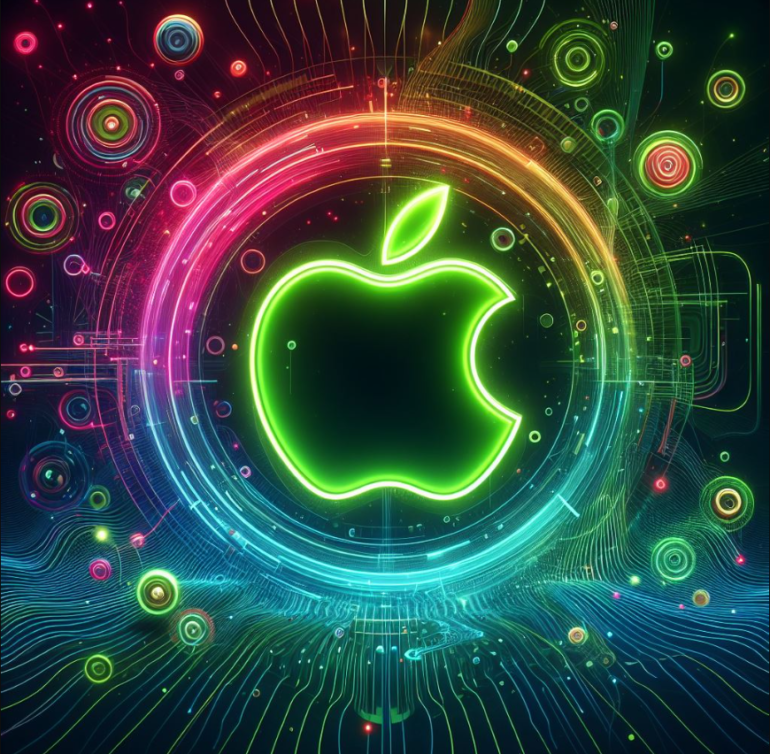- Apple introduces MM1, a groundbreaking generative AI model capable of processing text and images.
- MM1 showcases advanced capabilities, including answering questions based on visual prompts.
- Apple’s transparency in releasing details about MM1 reflects a strategic shift in AI research.
- Industry experts speculate that MM1 could lead to the development of a multimodal assistant.
- Apple faces pressure to innovate in the AI space amidst competition from rivals like Google and Amazon.
Main AI News:
As the tech sector revels in the advancements of generative artificial intelligence, one major player has remained conspicuously reserved: Apple. The company has yet to dip its toes into the realm of AI-generated emojis, but recent reports from both The New York Times and Bloomberg indicate a potential shift. Apple is said to be in preliminary discussions with Google regarding the integration of the search giant’s Gemini AI model into iPhones.
However, a research paper quietly released by Apple engineers last Friday hints at a different narrative. This paper unveils the development of a groundbreaking generative AI model, MM1, capable of processing both text and images. While Apple’s silence on the matter has been deafening, this revelation underscores significant investments the company is making in AI, investments that are already yielding tangible results.
In the ever-evolving landscape of AI technology, MM1 emerges as a formidable contender, boasting similarities in design and sophistication to recent AI models introduced by tech titans like Meta and Google. These models, as evidenced by work from Apple’s rivals and academic circles, possess the capability to power advanced chatbots and intelligent agents, capable of navigating complex tasks with finesse.
What sets MM1 apart is its status as a multimodal large language model (MLLM), trained not only on textual data but also on images. This unique architecture enables MM1 to respond to text prompts and tackle intricate questions concerning specific images. For instance, the model showcased its prowess when presented with a photo of a restaurant table adorned with beer bottles and a menu; MM1 accurately deduced the cost of the beers on the table, showcasing its ability to seamlessly integrate textual and visual data.
The MM1 paper sheds light on Apple’s strategic maneuverings in the AI arena, providing a level of transparency uncommon for the notoriously secretive company. By offering insights into the model’s training methodologies and enhancements, Apple demonstrates a commitment to fostering innovation in AI research.
While the implications of MM1’s emergence remain speculative, industry experts speculate that it could pave the way for the development of a multimodal assistant capable of interpreting and analyzing various forms of media, from photos to documents. Such an assistant could revolutionize user interactions, offering a more intuitive and comprehensive AI experience.
With rivals such as Google and Amazon leveraging large language models to enhance their own AI offerings, Apple finds itself at a pivotal juncture. The pressure to innovate and compete in the AI space has never been greater, particularly in the wake of advancements made by competitors in the smartphone market.
Apple’s CEO, Tim Cook, has hinted at forthcoming revelations regarding the company’s AI roadmap, promising investors a glimpse into its generative AI strategies. As Apple navigates this landscape, it may opt for a hybrid approach, leveraging both external partnerships, such as with Google’s Gemini, and internal developments like MM1, to create a cohesive AI ecosystem.
The future of generative AI at Apple remains shrouded in mystery, but one thing is certain: the unveiling of MM1 marks just the beginning of a transformative journey into the realm of artificial intelligence. As the company continues to push the boundaries of innovation, the possibilities for AI integration across its product lineup are limitless. With each new advancement, Apple inches closer to solidifying its position as a trailblazer in the AI revolution.
Conclusion:
The emergence of Apple’s MM1 AI marks a significant leap forward in the company’s AI endeavors. With MM1’s capabilities and potential for the development of multimodal assistants, Apple is poised to revolutionize user interactions and solidify its position as a frontrunner in the AI market. As competitors continue to advance in this space, Apple’s strategic investments in AI research will be critical in maintaining its competitiveness and driving future growth.

